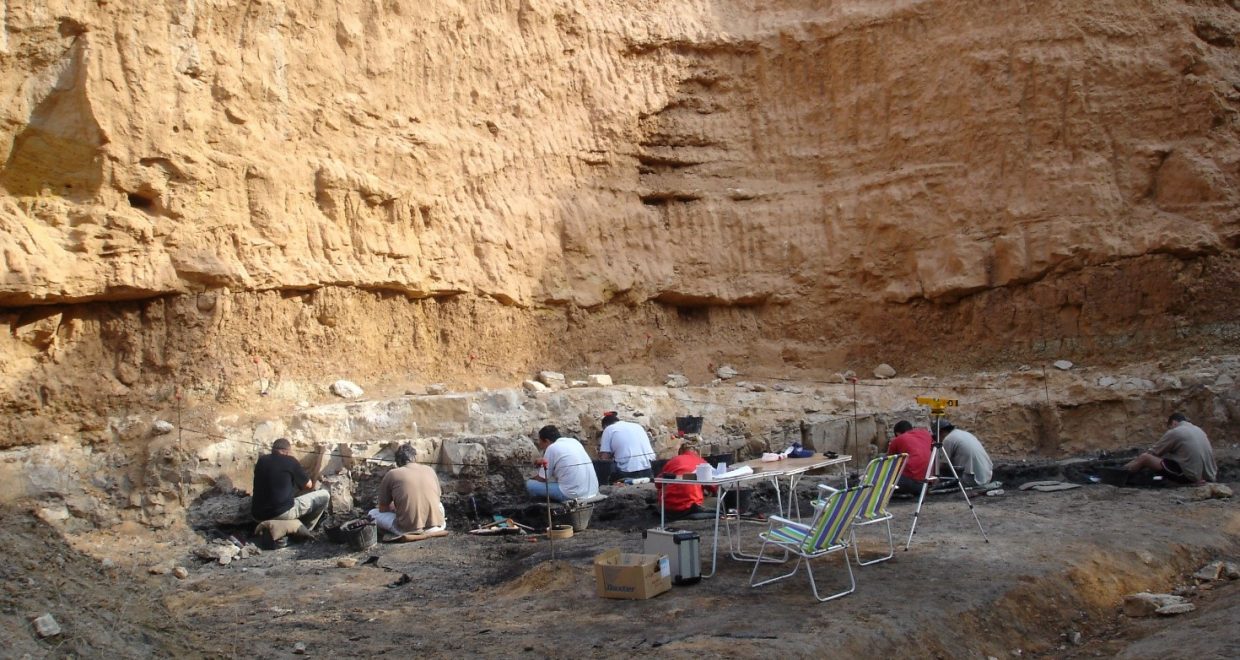The mystery of the crocodiles that appeared in Europe at the end of the Miocene
There are no crocodilians in Europe, which is good for the safety of those of us who like to peacefully fish or swim in lakes and rivers, but it is somewhat sad for those who prize biodiversity or simply like these fascinating predators. However, the fossil record tells us that crocodilians inhabited Europe for a very long span of time, let’s say from their origin in the Mesozoic until the end of the Miocene or the very beginning of the Pliocene, that is to say up to about 5 million years ago. The long evolutionary history of the European crocodilians is testified by a number of fossils that, in many cases, are represented by isolated teeth.
Crocodilians repeatedly replace their teeth throughout their entire lives and therefore each individual leaves behind a vast number (literally hundreds!!!) of mineralized structures that could undergo fossilization. Let’s also consider that most of the extinct species and all the extant ones were, and are, semiaquatic animals that left most of their teeth in the water of swamps, lakes and rivers – environments with a high sedimentation rate and therefore ideal places for fossilization. That is why isolated crocodilian teeth are found relatively often in the fossil record. Unfortunately they are very rarely useful for identifying their owners and therefore they provide very little information. In most cases they simply tell us that a non-identified crocodilian has been in a certain place at a certain moment. Something that has its own importance, but that is a sort of unsatisfying appetizer for more structured and detailed information. While a single individual can leave hundreds of teeth during its life, just a few bones (for example, one skull, two humeri, two femora, …) can enter in the fossil record when the animal dies. Nevertheless, bones, even if rare and often fragmentary, are much more informative than isolated teeth, and those that form the skull and lower jaw can tell us many things about their former owner. An entire skull can be a treasure.
It is also not a surprise that the last steps of the European crocodilians are mostly represented by isolated teeth that do not tell us who the last inhabitants of the continent were. However, there are luckily some interesting exceptions. Up to now the most informative remains came only from three sites in southern Italy, but a late Miocene locality in Spain, Venta del Moro (Fig. 1) not far from the touristic city of Valencia along the Mediterranean Sea, recently broadened our knowledge about the last European crocodilians. All these bone remains (both in Italy and Spain) can be inferred –with varying degrees of precision and confidence– to belong to a group of the true crocodiles that were not present previously in Europe. The disarticulated material from Venta del Moro (Fig. 2) dates back to about 6.2 million years and represents several portions of the skull, lower jaw, vertebral column and osteodermal cover (a sort of bony armour constituted of several platelets sunk in the skin) of what was likely a member of the genus Crocodylus, and that has been formally identified as cf. Crocodylus sp. This means that all the available characters are congruent with those of Crocodylus, however, we did not find the diagnostic characters that unambiguously identify this genus. At least two individuals were represented and this indicates that perhaps a population was present, not only a single individual that originated from … where?
As usually happens, a scientific project solves one problem but generates further questions and our paper is no exception. So, if true crocodiles, that is to say members of Crocodylus, appeared in southern Europe just at the end of the Miocene where did they come from?
The idea is that they came from Africa crossing the Mediterranean Sea, or perhaps dispersing along the coast from a river to another. The latter option is less likely because in that case they should have had a rather continuous distribution along the Mediterranean coast and we should have a lot of fossils and not just few isolated localities with Crocodylus or Crocodylus-like remains. The extant species of Crocodylus possess salt glands in their tongue and thanks to them can get rid of an excess of salt caused by prolonged habitation in salt water. An Australasian species, the marine crocodile Crocodylus porosus, can even disperse in the ocean for hundreds of kilometres thanks to surface currents. Therefore it should not be so surprising if ancient African crocodiles crossed the Mediterranean sea, and we are eager to find further fossils on both sides of the Mediterranean Sea for testing this hypothesis.
“Late Miocene remains from Venta del Moro (Iberian Peninsula) provide further insights on the dispersal of crocodiles across the late Miocene Tethys” by Massimo Delfino, Àngel H. Luján, Juan Abella, David M. Alba, Madelaine Böhme, Alejandro Pérez-Ramos, Emanuel Tschopp, Jorge Morales and Plini Montoya has been published in Journal of Paleontology, published by Cambridge University Press on behalf of the Paleontological Society. The article has been made freely available for a limited time.


Read other blog posts from Journal of Paleontology here
or view all blog posts from the Paleontological Society Journals





